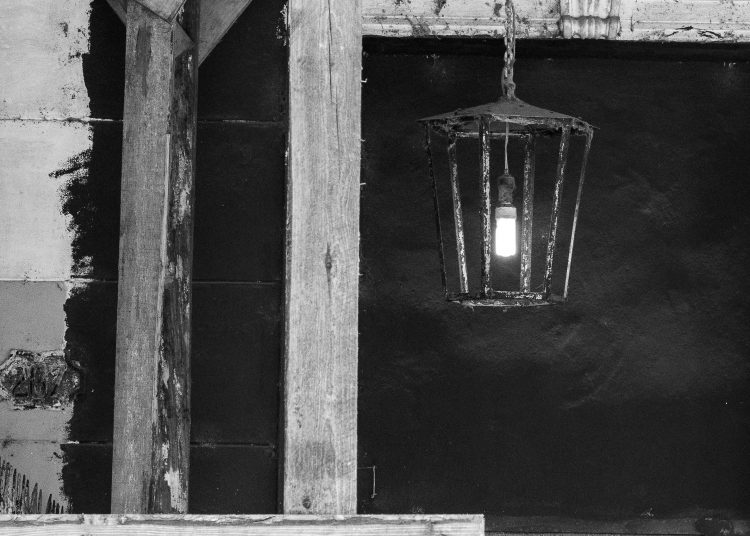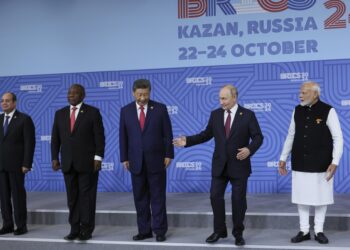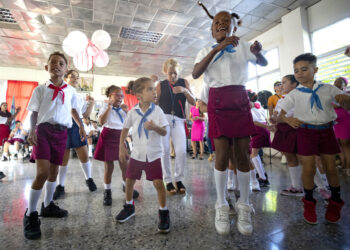Marta had her daughter Lorena on the same day as her birthday. On July 17, Marta’s partner killed them both using a large knife, with a blade that had previously been of a machete.
The knife always stayed in the house. Reinaldo had it done and he used it to shoe animals. But that day he took it with him, for them. He had been in an on-and-off relationship with Marta for a while, and they had started living together in his grandparents’ house only six days before.
Marta arrived with Lorena on a Tuesday to that rural settlement of Baracoa, a municipality in the eastern part of Cuba with 79,797 residents. “We say that he came in search of death,” comments Reinaldo’s grandfather. The Monday following their arrival, at seven-something in the morning, Marta and her daughter left the house.
A neighbor saw them take the road with Reinaldo. “I greeted him (…) I didn’t see him upset. How were we going to think that that boy was going to kill her?! And the girl! ”.
Supposedly, Reinaldo would accompany them to the road. He was carrying the girl in his arms. Marta would go to the city with Lorena, according to her grandfather, to do some shopping. Other people comment that perhaps she was going to work, without him knowing. Reinaldo didn’t want Marta to work. The grandfather says that his grandson had told him that he needed a woman to be at home and to take care of him, a woman that would only go out to medical appointments; and that she accepted his conditions.
They did not reach the road. Before, he got them out of the way. “That was an incredible thing. I don’t know what got into that man”, says a neighbor over and over again.
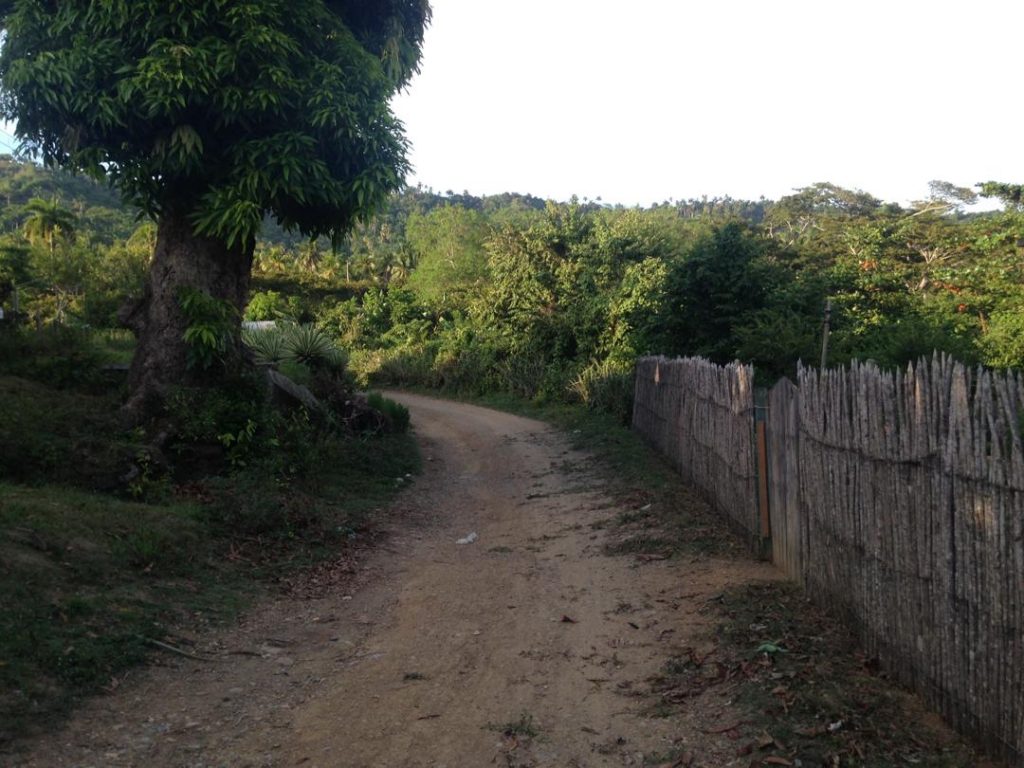
In that settlement, which is reached by walking about six kilometers from the point where the road deviates, several people believe that the devil got into Reinaldo’s body. The devil or something else. For his cousin, “it sure was something that ‘got inside of him’ … as people say.”
Reinaldo turned himself into the Police. Others have done the same before: in Baracoa the memory of femicides is big. Perhaps they turn themselves in because they believe they will be safer in prison than on the streets. A murder is likely to be followed by revenge, and Reinaldo knew it.
The local chief at a neighborhood level informed the aggressor’s grandfather about his statement: “He says he killed her so that she would not blackmail any more men”. A neighbor has a convergent hypothesis: “It seems that he heard that she was going to work and (…) he perceived it as blackmail”. Another claims that he had stolen a ram and she wanted him to return it. She told him that she would leave if he didn’t.
In any case, the murder of Marta and Lorena was a femicide. What led a woman and her daughter to the bottom of a dry well does not only speak of Marta, Lorena, and Reinaldo, but of the societies we have. It speaks about the obligation towards those who are still alive, to think deeply about the problem, to prevent the shock from becoming a spasm and then … a calm and forgotten issue.

Her
Marta was orphaned when she was little. She had a sister, a little younger than her. She was then raised by one of her aunts, with whom she returned to live after separating from her daughter’s father and until she went to Reinaldo’s house. She had no home of her own.
She had two technical high-school degrees: one in Accounting and Finance and the other in Gastronomic Services. Reinaldo’s grandfather remembers that she had told him that she earned 380 Cuban pesos, but he expresses doubt about whether she worked or not: “I don’t know if it was true or if it was a lie”. But yes, Marta had a paid job. When she was killed, she was holding a job as an economist in an office of Commerce and Gastronomy.
Those who knew her, can assure that she was a woman with good relations in the neighborhood, at her work, and also with her daughter’s paternal grandparents.
On the days that she was in the place where she did not come out alive, she used to talk with other women in the village. They say that everyone loved the girl there, and that, although she was little, she played with others.
Marta liked going to the beach in the afternoons, with her friends and Lorena; she also enjoyed dressing well, says the aunt. There were disagreements between the two of them. Her aunt is an older, religious woman. In her words, she tried to “guide her” and “tell her things”, which Marta rather rejected. “You know what youth is like,” laments the aunt.
The night Marta and Lorena left, their family didn’t know they were going to do it or where they were going. They did not know of Reinaldo’s existence. The aunt had left the house, and when she returned, Marta was in the doorway with her daughter and two unknown people, a man and a woman. Her aunt greeted the people and continued on to the kitchen. Marta entered her room and lingered there. “Perhaps it is that she wasn’t determined … it looked as if she was thinking about it”, the aunt reflects now.
Marta picked up some things and left without saying anything. The aunt didn’t see what she was leaving with. She thought she had gone to the beach, as usual. But when she realized that the fan and a nice bedspread that she had were missing, she assumed they were staying at a friend’s house.
The family did not know where Marta and Lorena were until they were corpses. Marta told her sister that she was going to Maisí. At least two friends did know the truth. One of them went to visit them at Reinaldo’s house, according to several sources.
On Sunday night, hours before they were killed, Marta could have asked for help. We do not know for sure. She called the father of her daughter, but he says he did not hear the call and did not return it. He thought it was something unimportant. They had talked last Thursday because he wanted to stay with the girl for the weekend. She assured him that they would be in Maisí.
Later, Marta dialed another number; her sister’s. They spoke. Her sister noticed she was nervous; that’s why she called her again, and Marta assured her that she was fine, in Maisí. The sister was not convinced and asked another aunt to call her again. At that moment, Marta did not answer the cell phone. Reinaldo did: “She’s not here, she’s in Maisí.”
The fact that someone unknown answered the call, from the phone she had just used, and said that she was not there, is a black gap between what happened on Sunday night and the early hours of Monday morning.
In Reinaldo’s family, they did know about Marta; she visited him in jail the times he was in prison. They knew their relationship was on and off. Neither their relatives nor the neighbors consider that there was evidence of violence among them. The fact that he did not allow her to work or “let” her leave the house is not considered violence according to their codes.
The prohibitions to leave the house, visit relatives, study or work are frequent in violence against women within a couple. That’s the way aggressors unravel the networks that they have or may have. This way they ensure that they lose economic autonomy and crystallize their material, psychological, and social dependence.
In the country, only 3.7% of women who have experienced violence in their relationships have gone to an institution or service for help; such as Police, Prosecutor’s Office, Houses of Orientation to Women and Family of the Federation of Cuban Women (FMC), Social Workers Program, health services and religious institutions. It is unknown how many have specifically gone to the Police, but the percentage is still lower than the aforementioned. In general, there is an underreporting in cases of violence against women.
Among the reasons why they do not seek help, there is a low perception of acts and processes of violence, which are only identified as such when they escalate in severity or leave physical marks. In Baracoa, the specialist who deals with cases of violence against women at the Houses of Orientation to Women and Family recognizes that many of them get to the institution through grassroots organizations in their communities (FMC, CDR, and others), without thinking that they are victims, rather assuring that they are guilty. “He hit me, but I asked for it” and “I am the one to blame for his abuse” are some of the phrases that the psychologist Gitsie Garrido Domínguez from Baracoa declares to Radio Baracoa that she has often heard.
In addition, women do not seek help from the Police due to the ineffectiveness and lack of training of justice operators and personnel of police institutions. The specialist from the Women’s Guidance House drew attention to it on the local radio. “I have asked several of them why they don’t do it and some say that when they go to the Police they are often not heard. They feel ignored, little or poorly listened. They take their data, in most cases, they impose a fine on the aggressor and then they send him home”.
A 2019¹ research regarding violence against women in Baracoa verified that in the period 2015-2018 there were 22 complaints about the actions of the National Revolutionary Police (PNR) in these cases and 21 unconformities with the criminal process followed against the aggressor, his sentence or the execution of the process.
The consequence of these institutional barriers is that many women “stay receiving physical violence all their lives, or until fate brings them worse luck”, concludes the specialist from the Guidance House. That last sentence has the force that reality gives. There are examples. Lourdes was murdered by her partner under the Miel river bridge, also in Baracoa. She had reported him for attempted murder. He threatened her. She had asked not to let him go because he was going to kill her. They released him to wait for the trial, and he killed her.
The aforementioned research showed that in the Baracoa Police records, 68% of the complaints of violence-against-women crimes received in 2018 were threats. For other years, the data is similar. After reporting the violence, if the aggressor returns home without any protective measure being taken, he or she often retaliates, feeling challenged, or in danger. This means that going to the police institutions to file a complaint, can aggravate the problem.
A source educated on the matter, who preferred anonymity, commented that after what happened under the Miel river bridge, death threats are being processed with a firmer pulse in the municipality. “Now, for threatening, the aggressor is imprisoned until the matter is clarified”. However, women’s safety is not guaranteed: existing laws, their application, and the preparation of those who operate justice continue to leave gaps. The aggressors know it.
Him
Reinaldo works in an agricultural cooperative in the area. It has a very well attended farm, with cacao, coconut and other crops like roots. For his neighbor, he keeps it “like a mirror.” That same neighbor considers him as a “hard-working, fighter and charismatic man with everyone”, “a normal young man.”
However, his grandfather assures that “he always had problems” and that is why he did not pass the compulsory military service. His cousin confirms it: “He did not pass the Army because he is mindless. His grandparents did not want him to”. She describes him as “crazy”. She remembers that once “he had a few drinks and began to cut grass on a hill at night”, but she clarifies: “He does not have an intellectual disability; he plays crazy.”
His grandfather, his cousin, his neighbor … They know that he had a criminal record for theft and dangerousness. “He does steal a lot” – admits his cousin. He steals chickens, pigs, rams, all that to sell it afterward”. However, she insists that he was not violent. They believe that he murdered Marta and Lorena in an incomprehensible act, caused by a supernatural entity, as Reinaldo himself declared to the Police. The neighbor remembers that the 30-year-old boy used to mention the devil from time to time. “He was a freak. He said things like… you know … ‘I am the devil’ joking and laughing”.
“I don’t even know what to say to you”, no one here can say that they saw a thing like that”, insists the grandfather. None of the people interviewed links the murder of Marta and Lorena with other violent acts that Reinaldo has committed in the past or with his way of conceiving women. The neighbor tells us that he was a “fucker”, even if it was paying. The cousin says that the money he made he used to spend it on women. Both say that his behavior with the grandparents was wrong, although he did not hit them.
“So that she would not blackmail any more men”, because she wanted to work, because she was going to leave him, out of jealousy, because she contradicted him … Whatever the motive for the crime was, it reaffirms a fact: Reinaldo murdered them as an ultimate way to control Marta. Reinaldo murdered them because for him, Marta was of his possession, she was “his wife”.
The pattern repeats. “I killed her because she was mine” has become a common line in the stories of women murdered by their partners or ex-partners in Latin America. We have seen it in Chile, Argentina, Uruguay …
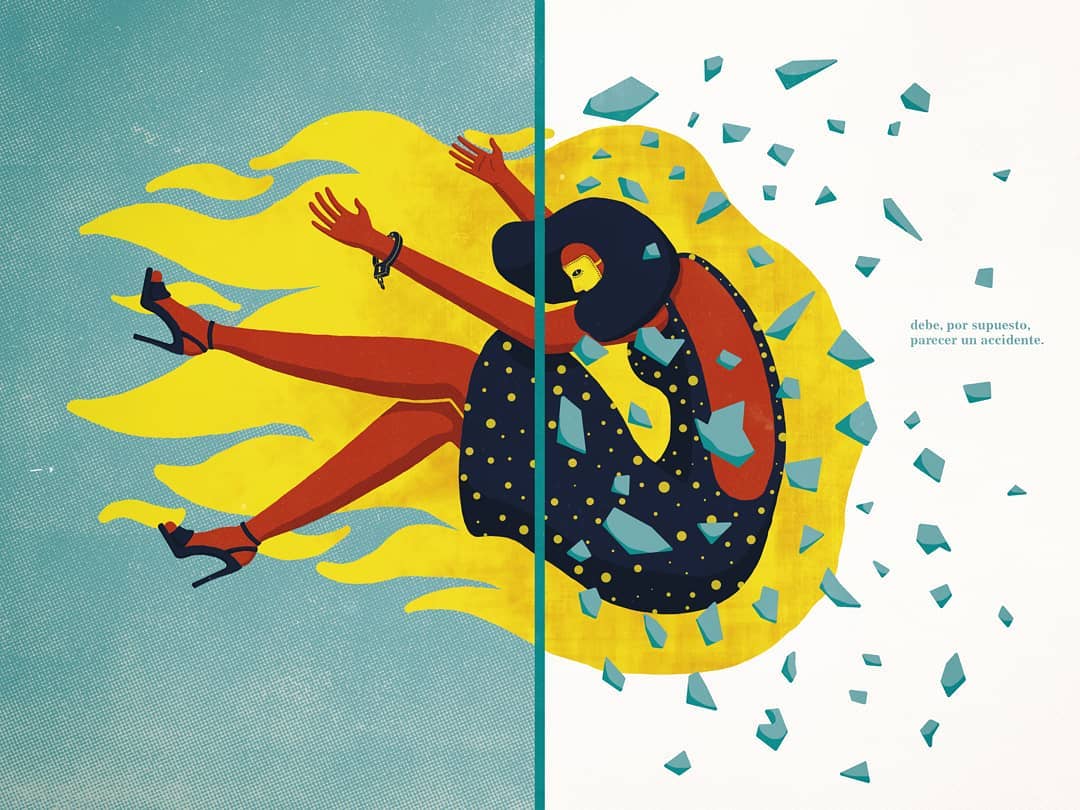
Femicide
All violent deaths of women are not femicides. A woman can die in a traffic accident or in a tumultuous fight and it is not femicide. It is femicide if in the act an imbalance of power is evidenced because she is identified as subordinate for her condition of being a woman and for no other reason; because at that moment the woman is considered to be someone dependent (psychologically or materially), someone who should be controlled, a sexual object, a property or a scapegoat, due to their closeness to another person.
In femicides there tend to be one or more of these signs: a history of violent ties between the aggressor and the victim, sexual violence before or after the murder, a situation of dependency between the victim and the murderer (due to trafficking, prostitution, etc.) and identification of the victim as another person’s target for punishment. Oftentimes, aggressors do not hide their identity, especially when they act in public places: they consider the crime as a moral act.
Femicides are based on a culture of violence, discrimination, interiorization, and subordination of women, which implies risks for them. They are not about isolated, sporadic, or episodic cases. They verify a need to exercise dominance and control over women. They are a problem installed in the culture, psychology, economic and political orders of our societies. For this reason, the discussion on femicides implies the responsibility of the State into their prevention and the duty to prevent impunity for aggressors in any cycle of violence. Otherwise, the state will also be responsible for its omission.
If there are silence and complicity regarding violence within families and/or in social institutions, if there is an inadequate legal and procedural treatment of femicides, or if the aggressors are justified with arguments such as “the man is violent by nature” or “she caused it because she was unfaithful”, the responsibility for the attack unfairly ends up falling on the victim.
Reinaldo committed femicide, although femicide is not typified in Cuba. The case will be treated as murder and he will be judged for that crime. The criminal resolution of these cases in the country is greater than in others where the murders may go unpunished, but this does not guarantee a comprehensive and complete approach to the problem. That path would necessarily pass through prevention and reparation to the families of the victims. It starts with the legal recognition of this specific crime: femicides do not occur for the same reasons as other murders.
If it is considered that Reinaldo had a conjugal relationship with Marta, the provisions of the Penal Code, valid since 1987 and amended in 1999, could be applied: a sanctioning framework of 15 to 20 years, or the death penalty (Article 316) for “that who purposely kills an ascendant or descendant or their spouse, whether by formalized marriage or not” (article 317). Marta already adds to the figures of the women’s deaths “due to assaults”, whose annual average from 2013 to 2019 is 129 cases².
In Baracoa, many people ask for the death penalty for the murderer, which has not been applied in the country since 2003. They are betting that tougher sanctions might dissuade of committing this type of crime. The argument has a problem: femicides occur because violence against women was naturalized or tolerated before; they will not decrease just by increasing the penalties. However, recognizing those as a specific type of crime will allow working beyond the procedural: in the political, social, and cultural spheres, and in the identification and containment of a route of violence that is not the same as the one that leads to other types of criminal acts.
Although femicides are not recognized as a crime in Cuba, an official rate was published in 2019 with data from 2016. The number only considered a part of those crimes: the crimes in which the aggressors were partners or ex-partners of the victim. In the Latin American laws that penalize this crime (currently existing in all the countries of the region, except for Cuba and Haiti), they are called “intimate femicides”. In Cuba, there were approximately 50 intimate femicides in 2016. They represented 41% of the total deaths of women due to assaults. Therefore, the framework of couple relationships, although it is not the only one where femicides occur, is highly relevant. The same happens in the rest of the world, and it contrasts with what happens with men: on very rare occasions they are murdered by their partners or ex-partners, or, in general, by women. There are more men than women murdered in the world, and in Cuba, but these crimes tend to be committed by other men, in public spaces, without the mediation of sexual assaults or prior emotional ties.
Marta’s murder was, in effect, intimate femicide and the one of her daughter, one per connection, since the violence was not directed for her, but she was caught up in the action. In 2020, at least 13 intimate or connected femicides have been known on social media or the independent press. The last one, on August 5th, less than seven days before this note was finished. For sure there are more; We do not have systematic, transparent, and updated statistics on the problem, classified by territory, in order to help determine if there are places with a higher prevalence.
Local specialists consider that, if the rate is known, Baracoa would be one of the municipalities where there is more violence against women in the country. In the registry of the Municipal Prosecutor’s Office it is stated that, between 2015 and 2018, 360 people filed complaints about that reason. 45.71% of the alleged aggressors were partners or ex-partners of the victims. Regarding intimate femicides, in 2016 – the year for which the national rate exists and was published- there were no cases in Baracoa. But in 2015 there were six cases, in 2017 one, in 2018 three, and in 2020 there are at least two: Marta and Lorena.
The House of Orientation to Women and the Family of the municipality does a systematic work and has been recognized for it. However, its reach is limited. Out of the 360 people who reported cases of violence against women between 2015 and 2018, 194 were the women themselves. In that same period, the House of Orientation to Women and the Family treated only 28 cases. A comprehensive policy is necessary, with a national reach and local operability, to accompany those efforts and to develop or allow others to grow.
Ana María
Ana María was not going to be part of this story. We got to her looking for information about what had happened to Marta. “Imagine how we women react in this town (…) killing women in Baracoa has become trendy”, she said in the first conversation. And then: “I myself have been the victim of my husband’s beatings”.
What explains our meeting with her is not a chance. Violence against women constitutes a widespread and installed problem in our societies; also in Cuba, where 39.6% of women have experienced violence within their intimate relationships at some point of their lives.
The shock for Marta also became fear for Ana María. She is still alive.
There are differences between Ana María and Marta. Ana María is a little older; she has three children and an official relationship with her partner for ten years.
At the same time, there is something in common. Ana María is another victim of violence. The attacks began a year after starting her relationship with Jorge and escalated from that point forward. She tells us that at first, she didn’t leave him because she was in love. In her second pregnancy, he started hitting her. “He got used to that until today, it’s normal for me.”
Normalizing violence or making it a habit can turn it into a life sentence. Actually, there might not be a way out of that. The bad moments have been many for Ana María, but the worst time was during her third pregnancy. “It was when he hit me the most. He turned my eyes black from the hits, which sent me to the delivery room, in pain. I did not have time to give birth yet and the gynecologist managed to control the pregnancy so that the girl was not born prematurely”.
That was just over a year ago. Jorge beat her up because another man had told him things about her. Jealousy and its consequences escalated: he has become “a beast in a bad way” The National Survey on Gender Equality (ENIG) revealed that jealousy is the main cause referred to by Cuban men as a reason for discussion with their partners.
Jorge is not “crazy” as some people say Reinaldo is. She herself describes him as a good, hard-working person who loves children and “is a fighter, in the sense that he tries to ensure that they do not lack food.”
Jorge does “let” Ana María work. She works, as Marta did, and as 50.9% of Baracoan women of working age do (a similar proportion to the national average). But she can only leave the house for that purpose, and nothing else. Jorge threatens her, and Ana María has told her mother several times: “he can kill me”. She couldn’t be clearer: “He thinks I’m his property and he doesn’t want to lose me”. Again, the robust pattern of possession is evident.
When she tells him that she is going to leave the house, Jorge “goes crazy.” “Sometimes I don’t know what is worse”, she tells us, and with that sentence, she sums up the enormous set of her impossibilities. She can tell him that she is going to leave, but she knows it is not true. “I would end our relationship, but I haven’t done it because I don’t have a home to go to. I live in his house. I have nowhere to go”.
The impossibility of accessing a home is one of the most important problems in Cuba nowadays. At the beginning of 2018, official sources considered a housing deficit of 929 695 houses (527 575 new to be built and 402 120 to be rehabilitated).
The ENIG reveals that, for the Cuban population, the housing shortage is among the most important problems affecting both men and women; along with low income, difficulties in obtaining food and transportation problems. For women, it is even more serious: they consider it their first problem.
Most of them cannot access their own homes with their resources. In 2019, the average monthly salary in Guantánamo was 778 Cuban pesos, the fourth lowest income in the country, according to the National Office of Statistics and Information. In Baracoa, it was 640 Cuban pesos. On Revolico (sales website), the cheapest house for sale in the municipality costs 5000 CUC: 195 times the average salary in Baracoa; 328 times Marta’s salary; 454 times Ana María’s income.
In 2018, a Housing Policy began in Cuba, with the aim of addressing this situation. The institutions in charge expect that the year 2020 will end with 41,014 additional houses, including those built by state agencies (about 15,000), those subsidized by the State (12,000), and those built “by the people’s own effort” (about 13,500). The latter, strictly speaking, depend entirely on people and their resources, but they are part of the plan’s data.
One of the social groups benefiting from the program are mothers with at least three dependent sons or daughters. In 2020, 68 houses were delivered to women in that condition, and, since the program began, 620 houses have been delivered to those women. Ana María is aware that the president himself has spoken about it, and that she should be considered. “But they didn’t even want to give me that,” she says.
The Policy aims to contribute to the increase of the low birth rates in the country. Ana María is a potential beneficiary because she has two girls and a small boy, but she should also be considered for something else. The Program could also consider women that are victims of violence.
The housing shortage structures from the root of the reproduction of violence against women, who are also mainly in charge of their sons and daughters. Without having where to live, where to take them, the cycle can be perpetual. A comprehensive policy to address the problem must also call for solutions through this channel, which are linked to temporary actions in emergency situations; including shelters for women whose lives are in danger.
For them, for all the Ana Marías out there, the marks of the years of violence may not be erased, but their lives can be preserved. “Things happen, and they are quickly forgotten,” she said in this weeks-long dialogue about women who have been victims of violence and who have been murdered.
Chance made Marta and Lorena celebrate their birthdays together, one day in September; violence against women, made them die on the same day, murdered by the same person.
There can be no calm or forgetfulness for the Martas, the Lourdes, the Lorenas, the Ana Marías… none.
***
Notes:
* Marta, Lorena, Ana María, and Lourdes are pseudonyms to protect the identity of victims of violence. Reinaldo and Jorge too, due to the different connections that could be made from their real names.
¹ Ricardo Riesco, Laura and Alba Cobas, Arelis. (2019). “La violencia contra la mujer en el municipio de Baracoa. Retos y expectativas de cambio”. Bachelor Thesis in option to the degree of Law, University of Guantánamo.
² According to the corresponding editions of the Statistical Health Yearbook, taking the most recent data for years that appear in more than one source, since we observe differences between them.

